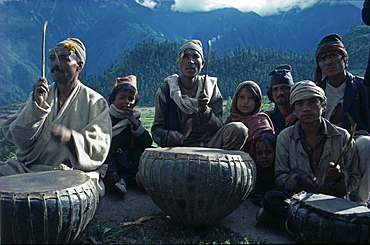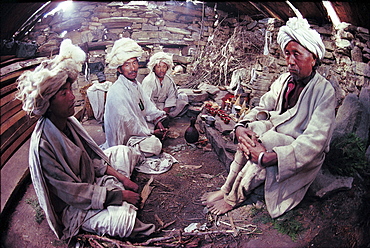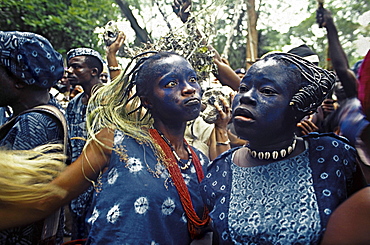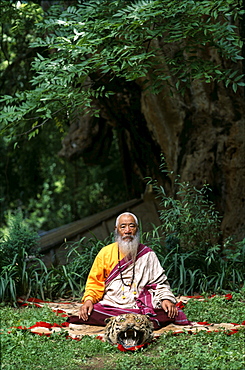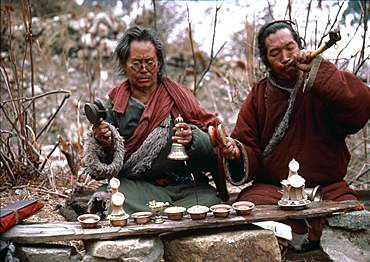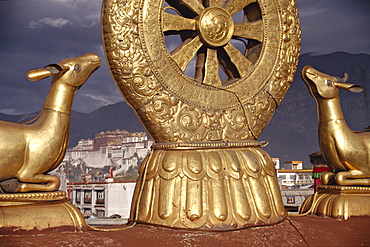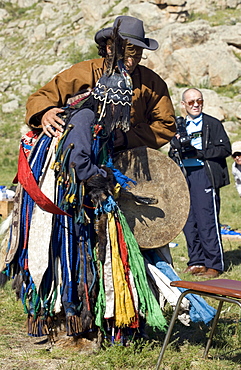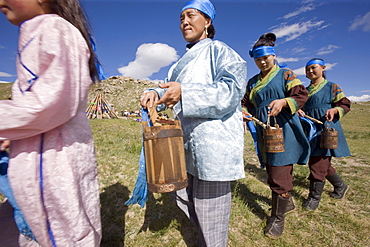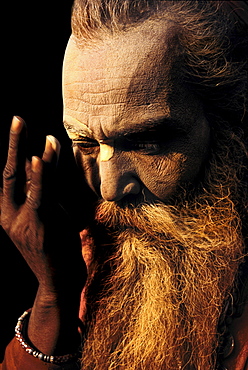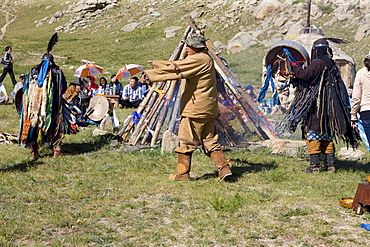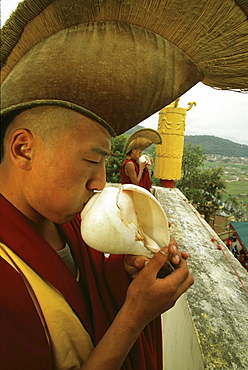Recent searches
Loading...
1196-262 - Different Indian spices on display at Swaswara, Karnataka, India, Asia
1196-264 - The restoration of the citadel and temples of Basgo, perched on an eroded hillside, an example of a successful restoration project, Ladakh, India, Asia
1196-261 - Chittor Kottaram, Cochin (Kochi), Kerala, South India, India, Asia
1196-266 - Different Indian spices on display at Swaswara, Karnataka, India, Asia
1196-64 - Makuna-colombian shamans making shaman mask,
1196-4 - Amitaba thangka. Buddha amitaba radiating rainbow light to sentient beings
1196-67 - Kayapo women dancing traditional dances, brazil,amazon
1196-33 - Colombian shaman, , amazon, makuna indians, makuna woma
1196-207 - Mandala mudra, kalachakra, bodhgaya, india. A mandala mudra is a sacred form or diagram of universe collective consciousness. Mandala means essence, la means container; a mandala contains essence of religion possesses great power, gathering within itself forces of universe. Symbolizing both mind body of buddha, mandala represents order harmony achieved by a truly enlightened mind. Hail to jewel in lotus. Nothing at will is born nothing at will there is nothing that is bound there is nothing liberated.,mahasiddha savarip
1196-134 - Damai, tailor caste of nepal, playing music on celebration of jania purnima festival humla, north-west nepal
1196-225 - Humla, shamans. shamans central to ceremonial life, with their spirit possession high point of every collective ritual. Their white wool tufted turnans match description of zhangzhung’s priests
1196-60 - Sadhu doing yoga at hindu temple pashupati nath, nepal
1196-107 - Fire ritual at chiwang monastery during the mani rimdu festival. these monks circumambulate the pyre after its ignition. one holds a long book wrapped in a felicitous scarf. the purifying fire takes the offering and raises them towards the sky in smoke. the circumambulatory ritual also recalls the way disciples showed respect for the buddhas body. solu khumbu, nepal
1196-29 - Nepal. Sonam & boom praying at charnel grounds. Humla. Vajrayana is tantric mahasiddha, lives fearlessly in terrifying places like remote jungles charnel grounds. nyingma lamas perform ritual at cremation grounds. lama rattles damaru, a small ritual drum to have origins in - shamanism. damaru, used as a tantric device to summon gods ward evil spirits, once made from human skull bones dried human skin as a reminder of impermanence of body. other lama, boom blows a kangling, a human thigh-bone horn. kangling is used in exorcism is capable of gods demons. Traditionally, best bones a kangling come from brahmans, particularly sixteen-year- brahman girls-or from tigers
1196-227 - Wearing tree bark cloth masks and skirts, dancers representing fish spirits are invited during the season of the peach palm harvest to drink the juice. it is a feast and ritual exchange: the host group offers the spirits large quantities of peach palm juice, smoked meat and fish, and shaman-blessed coca and snuff. the visitors are the costumed dancers impersonating animal spirits. people eat the meat and fish, animal spirits receive the fruits of peach palm, which are cultivated, harvested, and processed by humans. this exchange expresses the idea that people and animals depend on each other for survival and reproduction. vaupes basin, eastern colombia amazon, population: 600
1196-149 - Yoruba women dance in trance at a sacred water festival to honor their animistic spirits. nigeria, africa
1196-111 - The idea of the interconnectedness of all things is central to the tribal way of looking at the world. practical knowledge of the environment, of crops and medicines, of hunting and fishing, is a byproduct of it. the makuna believe that human beings, animals, and all of nature are parts of the same one. animals and fish live in their own communities, which are just like human communities, with their chiefs, their shamans, their dance houses, their songs, and their material possessions. when human peoples dance in this world, the shaman invites the animal people to dance in theirs. if humans do not dance and shamans do not offer spirit food to the animal people, the animals will die out and there will be no more game left in the world. for the makuna the radical disjunction so characteristic of western thought between nature and culture, men and animals, dissolves. eastern colombia amazon, vaupes region, population: 600
1196-145 - Chatral senge dorje rinpoche seated on a tiger skin, yonglesho, Nepal
1196-58 - A young sadhu reads holy scripture near fire. Worship is part of daily life. Some sadhus chant mantras. gayatri mantra is of several mantras that sacred incantations or mystical formulas of ancient literature. gayatri mantra given by brahma mentioned in rigveda is named after consort of brahma: o that glory- of savitri most high. Oh divine us mediate upon. it inspire understanding. goal of recitation is to attain realization. Practice lead mind into a transcendental union with deity.Pashupatinath, kathmandu, nepa
1196-178 - A painting of Bakula Rinpoche hangs behind his reincarnation, a six year old boy from Nurla, at Samkar Tashi Gatsal House. Ladakh, India
1196-59 - Buddhist monks prostrating at maha bodhi temple complex in bodhgaya. Prostration is a gesture used in buddhist practice to show reverence to the triple gem (comprising the buddha, his teachings, and the spiritual community) and other objects of veneration. Kalachakra initiation in bodhgaya, india
1196-219 - Nepal. Ritual, sonam/boom. Lobsangs cremation. Humla. traveler reached of journey! In freedom of infinite he is free from sorrow, fetters that bound thrown away, burning fever of life is no more,oesays dharmapada. Lobsang having spent whole life preparing moment of death, finds liberation on february 14, 1986. Extensive ritual follows cremation-traditionally a forty nine period, sonam lama rattles damaru. A small ritual drum to have origin in - shamanism. damaru, used as a tantric device to summon gods ward evil spirits, once made from human skull bone dreid human skin as a reminder of impermanence of body. Boom lama blows a kangling, a human thigh-bone horn. kangling is used in exorcism is capable of gods demons. Traditionally, best bones a kangling come from brahmans, particularly sixteen-year- brahman girls-or from tigers. On makeshift altar rest chhome, votive lamps filled with butter, cups of water, grains, tormas, holy food made of barley meal decorated with medallions of butter offered to gods. Alone, boom lama continues prayers of deceased
1196-9 - For centuries the amazonian forest has been a nourishing mother for the kayapo, who survive mostly on hunting, fishing and gathering. gorotire kayapo reserve, brazilian amazon
1196-17 - Colombian shaman, , amazon, makuna indians, makuna woman chil
1196-51 - Monk beating traditional drum called gong, int he courtyard of chiwang monastery during mani rimdu festival. chiwang monastery, solu khumbu, nepal
1196-72 - Kayapo women dancing traditional dances, brazil,amazon
1196-172 - Kayapo women dancing traditional dances, brazil
1196-153 - Buddhist pilgrims circumambulate the mayadevi temple and the pond in front of it. Lumbini, nepal
1196-232 - Chhetri girls carry firewood. Humla, north-west nepal
1196-226 - Colombian shaman, , amazon, makuna indians, makuna woman chil
1196-86 - Trulshig rinpoche, blesses. Tulshig rinpoche blesses. Tulshig rimpoche s followers believe that he, like many other lamas, reassumes a human body after death in order to return to disciples. previous incarnation of tulshig rimpoche spent several years at dzarongpu monastery (highest monastery in world located at 16,500’ within sight of northern side of mt everest) served as of ngawong tenzin teachers. He promised to return in next life, so at tulshig s death ngawong tenzin norbu sought found reincarnation. current tulshig rimpoche then came to monastery studied with ngawong tenzin norbu. relationship between teacher student, in which a teacher returns to study from former student, maintains lineage over generations. Bhutan
1196-204 - Mani mask dancers at mani festival marks setting in of spring season in humla. masked dances diversion a long-established part of bonpo religious ceremonies.Dance Is means by which supernatural forces be brought down to world of. Dance recalls a time when distance between spirits samll. Humla, north-west nepal
1196-244 - A brass plate full of offerings to God. Coconut, dried fish, black soya beans, duck eggs, oiled wicks, colour powder, bitten rice, betel nut, hand made rice paper incense, unhusked rice and flowers. Brahmayani Temple, Bhaktapur, Nepal
1196-228 - Monk prostrating in front of maha bodhi temple. Bodhgaya prostration is a gesture used in buddhist practice to show reverence to the triple gem (comprising the buddha, his teachings, and the spiritual community) and other objects of veneration. Kalachakra initiation in bodhgaya, india
1196-115 - Kalchakra initiation. holiness 14th dalai lama conferring giving kalachakra initiation in bodgaya, india. Because of profundity, kalachakra initiation be bestowed only by most realized of tibets lamas. Rays of light at heart of lama-inseparable from kalachakra-draw in. Entering mouth pass through center of body, through vajra path enter mothers lotus, melting into a luminous drop which dissolves into emptiness. From within emptiness arises a jewel from which arise as a deity embraced by consort mamaki. -instructions visualization in kalachakra tantra
1196-108 - Dakini painting. Without a consort, a partner of skillful means, there is no that experience mysteries of tantra. -padmasambhava to yeshe tsogya
1196-239 - A solitary mask dancer appears wearing a frightening mask and silk brocade. they circle the courtyard with sprightly leaps. called protectors of faith, or dharmapdla, the origins of figures like these can be traced back to the pre-aryan peoples of india. originally known as yaksas (literally, a wondrous thing), they were tree spirits, who were accepted by the buddhists as defenders of the faith. in nepal and tibet, as in india, local deities were converted into protectors. a devotee of an alien sect devised a means to humiliate the buddha and his disciples. the buddha discovered it and succeeded in converting him to his teaching. due to lack of wisdom, the buddha remarked, some could not realize the goodness of his disciples and he compared the ignorant to the blind and the wise to those who have eyes.nobody is condemned in buddhism, for greatness is latent even in the seemingly lowliest just as lotuses spring from muddy ponds. -the dhammapada. solu khumbu, nepal
1196-124 - Purchang (cremation palace) of h.h. Dilgo khyenste. Bhutan. H.h. Dilgo khyentse rinpoche (1910-1991), tutor to present dalai lama revered as of greatest exponents of dzogchen- teachings of great perfection. Khyentse rinpoche®s purchang (cremation palace), satsam chorten, below paro takstang, bhutan, november 4, 1992 never forget swiftly this life will be over, like a flash of summer lightning or wave of a hand. that have opportunity to practice dharma, do waste a single moment on anything else, practice with your energy.oe h.h. Dilgo khyenste rinpoche, heart treasure of enlightened ones my delight in death is, greater than delight of traders at making vast fortunes at, or of lords of gods vaunt their victory in battle or of those sages have entered rapture of perfect meditative absorbtion. So just as a traveler sets on road when time come to go, i will remain in this world no longer, will dwell in stronghold of great bliss of deathlessness. -longchenpa, fourteenth- century dzogchen master
1196-11 - 13th century national park comprises chinggis khan's giant statue museum and live museum "town from 13 century". The ancient nomadic mini kingdom is located in the distance of 130 km east of ulaanbaatar in area of erdene zuu of tov province. It takes 2 hours driving on paved road. In the live 13th century kingdom one will see and experience the authentic lifestyle of mongols, who were lived in powerful mongol empire?s Period. This place gives you a same feeling that famous traveler marco polo and william rubruck felt once upon time. Tov province, mongolia
1196-151 - Buddhist monk make prostration as he circumambulate the mayadevi temple in lumbini. Nepal
1196-147 - Colombian shaman, , amazon, makuna indians, makuna closeup, makuna workin
1196-118 - Aside from a life of simplicity focus on divine, many sadhus engage in a diverse array of practices both internal external in order to attain higher states of awareness consciousness. This sadhu chosen hatha yoga shows results--a well-disciplined, strong body--while holding kukkuta asana, or cock posture. India
1196-75 - Sadhus rally initiation at ujjain kumbh mela, indi
1196-194 - Anuradha Koirala holds up her CNN Hero of the Year 2010 award as she is warmly greeted upon her return. Tribhuwan International Airport, Kathmandu, Nepal. A woman whose group has rescued more than 12,000 women and girls from sex slavery has been named the 2010 CNN Hero of the Year. Anuradha Koirala was chosen by the public in an online poll that ran for eight weeks on CNN.com. ?Human trafficking is a crime, a heinous crime, a shame to humanity,? Koirala said after being introduced as one of the top 10 CNN Heroes of 2010. ?I ask everyone to join me to create a society free of trafficking. We need to do this for all our daughters
1196-87 - Colombian shaman, , amazon, makuna indians, makuna closeup, makuna workin
1196-79 - Invocation of the tengir (celestial) forces by means of drumming and dance. Like the sun, fire is a force that can attract as a magnet to the tengir forces. Tuvshintugs dorj (in yellow) carries the status of a ?Royal Shaman,? Meaning that he can channel three-quarters or more of the hundred tengir energies. 13th century national park, tov province, mongolia. 13th century national park comprises chinggis khan's giant statue museum and live museum "town from 13 century". The ancient nomadic mini kingdom is located in the distance of 130 km east of ulaanbaatar in area of erdene zuu of tov province. It takes 2 hours driving on paved road. In the live 13th century kingdom one will see and experience the authentic lifestyle of mongols, who were lived in powerful mongol empire?s Period. This place gives you a same feeling that famous traveler marco polo and william rubruck felt once upon time
1196-32 - Xavante warriors prepare to wrestle wooden poles, a of taming or harnessing dark jungle forests. Brazil
1196-142 - A traditional tent camp springs up around a site where ordinary mongolians exploring gold. Ninjas have been mining gold past 10 years, exhausting 10-hour days norm here. Sarangol valley, northwest of capital city ulan bator, mongolia
1196-50 - Anuradha Koirala, proclaimed winner of CNN Hero of the Year 2010, warmly greeted upon her return. Tribhuwan International Airport, Kathmandu, Nepal. A woman whose group has rescued more than 12,000 women and girls from sex slavery has been named the 2010 CNN Hero of the Year. Anuradha Koirala was chosen by the public in an online poll that ran for eight weeks on CNN.com. ?Human trafficking is a crime, a heinous crime, a shame to humanity,? Koirala said after being introduced as one of the top 10 CNN Heroes of 2010. ?I ask everyone to join me to create a society free of trafficking. We need to do this for all our daughters
1196-214 - Dharma chakra, jhokang roof, lhasa. Buddha shakyamuni considered a cultivated awareness of death impermanence to be fundamental to a happy healthy life. Tibet
1196-89 - Sang sang rimpoche uses the dorje, a sacred ritual object to make the first decisive cut into the sand mandala on the last day of the mani rimdu festival. chiwang monastery, solu khumbu, nepal. solu khumbu, nepal
1196-91 - H.h. 14th dalai lama. In early days most of individual tantric systems were kept separate from another, each regarded as a path to enlightment. here again passage of time brought about fusion cross-fertilization, a tradition of uniting various tantras emerged, at least on a simple level a daily meditation. India
1196-158 - Torpu eppi. Every line in work-worn face tells a story. In mountains, is a sign of wisdom in of survival. Torpu eppi wears heirloom necklaces of coral, amber, turquoise, acquired on trading trips to tibet humla, north-west nepal
1196-43 - Sri lankan monks pray under bodhi tree in front of the mayadevi temple. Lumbini, nepal
1196-16 - Sadhu smoking nirvana at pashupati nath temple, nepal
1196-71 - The 400 year-old stone and mud brick house of the Lunpo Alchi (minister of Alchi village) towers above farmhouses topped with fodder, and sits below a latho (god place) marking the presence of a local god. Ladakh, India
1196-117 - 13th century national park comprises chinggis khan's giant statue museum and live museum "town from 13 century". The ancient nomadic mini kingdom is located in the distance of 130 km east of ulaanbaatar in area of erdene zuu of tov province. It takes 2 hours driving on paved road. In the live 13th century kingdom one will see and experience the authentic lifestyle of mongols, who were lived in powerful mongol empire?s Period. This place gives you a same feeling that famous traveler marco polo and william rubruck felt once upon time. Tov province, mongolia
1196-209 - Reflection. Tibetan peoples home, rajpur, india. India. I remember this body when it a childs as it gradually took form of a youth. very limb is twisted worn. It is my body, it delights even my eyes.,seventh dalai lama, meditations on ways of impermanence. tradition regards meditation on death impermanence only as a useful technique keeping mind intensely focused. It also sees it as a method unlocking deepest secrets of life
1196-146 - Tens of thousands of buddhist pilgrims from around the world traveled to bodhgaya, a town in northern india, to hear exiled tibetan spiritual leader hh dalai lama give the kalachakra-religious teachings. Pilgrim take rickshaw to the main temple in bodhgaya. Kalachakra initiation in bodhgaya, bihar, india
1196-192 - Darjeeling school children. School children at tibetan childrens village, darjeeling, india. A tibetan doesnt know tibetan language is like a bird with only wing
1196-27 - Horse milk is sprinkled into the four directions, as offerings to the nature spirits of the area, the sadak, or ?owners Of the earth.? Sometimes vodka is used instead, or as well. Milk is sacred to the mongol shamans, who believe that life on earth is descended from beings who originally came here on winged horses. Here two young female shamans make the offering in a ritual manner. Countryside mongols make this offering every morning on waking up; they usually also offer smoke, that the wind carries around the world as a prayer for harmony and prosperity. 13th century national park, tov province, mongolia. 13th century national park comprises chinggis khan's giant statue museum and live museum "town from 13 century". The ancient nomadic mini kingdom is located in the distance of 130 km east of ulaanbaatar in area of erdene zuu of tov province. It takes 2 hours driving on paved road. In the live 13th century kingdom one will see and experience the authentic lifestyle of mongols, who were lived in powerful mongol empire?s Period. This place gives you a same feeling that famous traveler marco polo and william rubruck felt once upon time
1196-6 - Imprints of Protective God in a Chorten. Ladakh, India
1196-191 - Butter lamp offerings to the Bagmati River flowing next to Brahmayani Temple. Newar Village Women wears "Haku Patasi" to the Temple. (Haku Patasi is garb worn by Newari woman). Bhaktapur, Nepal
1196-177 - Some religious people reach Brahmayani temple measuring their body length. To do so, a person prostrates on the ground and extends his clasped hands above his head. An assistant puts a few grains of rice at the end of the clasped hands as a marking point. Then, the man steps to this marking point and then prostrates again. Bhaktapur, Nepal
1196-39 - Potala palace seen through dharma chakra wheel from jhkokhang roof. Tibet
1196-188 - Invocation of the tengir (celestial) forces by means of drumming and dance. Like the sun, fire is a the shamans often wear a ?light-protecting visor? Over their eyes. The radiance of the celestial spirits can be extremely strong, and this protects the onlookers from the blast of light when the celestial spirits enter the body of the shaman. 13th century national park, tov province, mongolia. 13th century national park comprises chinggis khan's giant statue museum and live museum "town from 13 century". The ancient nomadic mini kingdom is located in the distance of 130 km east of ulaanbaatar in area of erdene zuu of tov province. It takes 2 hours driving on paved road. In the live 13th century kingdom one will see and experience the authentic lifestyle of mongols, who were lived in powerful mongol empire?s Period. This place gives you a same feeling that famous traveler marco polo and william rubruck felt once upon time
1196-66 - These reindeer peoples' entire existence is based around their herds of reindeer, which provide milk, skins for clothes, horn for carving and medicine, transport and occasionally, meat. the tsaatan are part of the tuvan ethnic group, which inhabits the tuvan republic of russia. there are only about 200 tsaatan in total, spread over 100,000 sq km of northern mongolia. they are nomadic, often moving their small encampments every three to four weeks, searching for special types of grass and moss loved by the reindeer. the tsaatan are strong practitioners of shamanism. west taiga, northern mongolia
1196-13 - Horse milk is sprinkled into the four directions, as offerings to the nature spirits of the area, the sadak, or ?owners Of the earth.? Sometimes vodka is used instead, or as well. Milk is sacred to the mongol shamans, who believe that life on earth is descended from beings who originally came here on winged horses. Here two young female shamans make the offering in a ritual manner. Countryside mongols make this offering every morning on waking up; they usually also offer smoke, that the wind carries around the world as a prayer for harmony and prosperity. 13th century national park, tov province, mongolia. 13th century national park comprises chinggis khan's giant statue museum and live museum "town from 13 century". The ancient nomadic mini kingdom is located in the distance of 130 km east of ulaanbaatar in area of erdene zuu of tov province. It takes 2 hours driving on paved road. In the live 13th century kingdom one will see and experience the authentic lifestyle of mongols, who were lived in powerful mongol empire?s Period. This place gives you a same feeling that famous traveler marco polo and william rubruck felt once upon time
1196-150 - A view of Swayambhu Stupa with full moon marks the 2554 years of Lord Gautam Buddha's birth. Nepalese and Tibetan pilgrims lit lamp at the Stupa with the hopes of peace in country. Despite of the on going political turmoil about non-formation of Constitution, Buddha Jayanti (Buddha's birthday) was celebrated throughout the nation in peace. Kathmandu, Nepal. 2010-May-27
1196-163 - Colombian shaman, , amazon, makuna indians, makuna closeup, makuna workin
1196-80 - Forehead designs, called tilakas, show a sadhus religious and sectarian affiliations and range from a simple daub of color to complex designs involving the entire face. the application of a tilaka is usually done at the start of each day after bathing as a way to sanctify the body and prepare it to receive the divine. pashupatinath, nepal
1196-21 - Newars, the dominant clan of Kathmandu Valley, playing traditional music. Bhaktapur, Nepal
1196-119 - Bhutanese mother uses traditional kira to carry child
1196-165 - Forehead designs, called tilakas, show a sadhus religious sectarian affiliations range from a simple daub of color to complex designs involving entire face. Vertical design of this sadhus tilaka shows to be a vaishnava, or follower of vishnu, preserver of universe. He is a benevolent gentle. gentility is reflected in worshippers devotess. application of a tilaka is usually done at start of each after bathing as a to sanctify body prepare it to receive divine. India
1196-104 - Invocation of the tengir (celestial) forces by means of drumming and dance. Like the sun, fire is a the shamans often wear a ?light-protecting visor? Over their eyes. The radiance of the celestial spirits can be extremely strong, and this protects the onlookers from the blast of light when the celestial spirits enter the body of the shaman. 13th century national park, tov province, mongolia. 13th century national park comprises chinggis khan's giant statue museum and live museum "town from 13 century". The ancient nomadic mini kingdom is located in the distance of 130 km east of ulaanbaatar in area of erdene zuu of tov province. It takes 2 hours driving on paved road. In the live 13th century kingdom one will see and experience the authentic lifestyle of mongols, who were lived in powerful mongol empire?s Period. This place gives you a same feeling that famous traveler marco polo and william rubruck felt once upon time
1196-98 - Xavante race. race is really a race at, it’s a ceremony, an aesthetic event. Xavante nonplused by notions of winning losing. logs carried by team, representing oppositions that xavante believe go to make up universe. running of logs expresses dynamic tension between opposing principles. purpose of ceremonies to stress that these antithesis need tear world apart. Opposing be controlled to complement each other create equilibrium harmony. Brazil
1196-8 - Monks offer butter lamps. Bodgaya, india. Monks offer butter lamps in front of mahabodhi temple marks site of buddha’s enlightment twenty-five hundred years. centuries have made pilgrimages across himalayas to sites connected with life of historical buddha. From a tantric perspective, pilgrimage is more than paying homage at sacred sites. Rather, it is that activities performed at these places become a memory of place itself. By attuning oneself through ritual meditation to this timeless presence, similar experiences be evoked
1196-88 - Yaruba with tatoo knifed on cheek, nigeria, afric
1196-167 - Bodhgaya, kalachakra, india. holiness 14th dalai lama conferring giving kalachakra initiation in sarnath, india. Because of profundity, kalachakra initiation be bestowed only by most realized of tibets lamas. Rays of lightÀÜat heart of lama-inseparable from kalachakra-draw in. Entering mouth pass through center of body, through vajra path enter mothers lotus, melting into a luminous drop which dissolves into emptiness. From within emptiness arises a jewel from which arise as a deity embraced by consort mamaki.
1196-176 - Invocation of the tengir (celestial) forces by means of drumming and dance. Like the sun, fire is a force that can attract as a magnet to the tengir forces. Tuvshintugs dorj (in yellow) carries the status of a ?Royal Shaman,? Meaning that he can channel three-quarters or more of the hundred tengir energies. 13th century national park, tov province, mongolia. 13th century national park comprises chinggis khan's giant statue museum and live museum "town from 13 century". The ancient nomadic mini kingdom is located in the distance of 130 km east of ulaanbaatar in area of erdene zuu of tov province. It takes 2 hours driving on paved road. In the live 13th century kingdom one will see and experience the authentic lifestyle of mongols, who were lived in powerful mongol empire?s Period. This place gives you a same feeling that famous traveler marco polo and william rubruck felt once upon time
1196-74 - Bonpo conch shell, t. Norbutse. young monks, wearing ceremonial hats, blow on conch shells to call monks to prayer. yellow cylindrical object behind them is a victory banner, symbolizing monasteries defeat of negativity evil intention on premises











